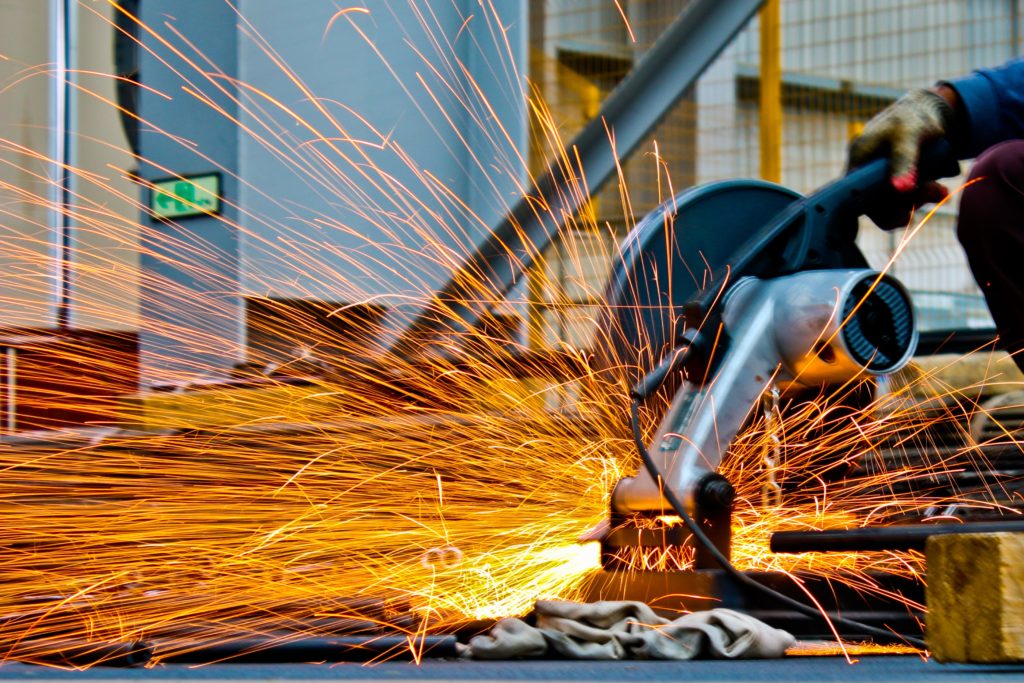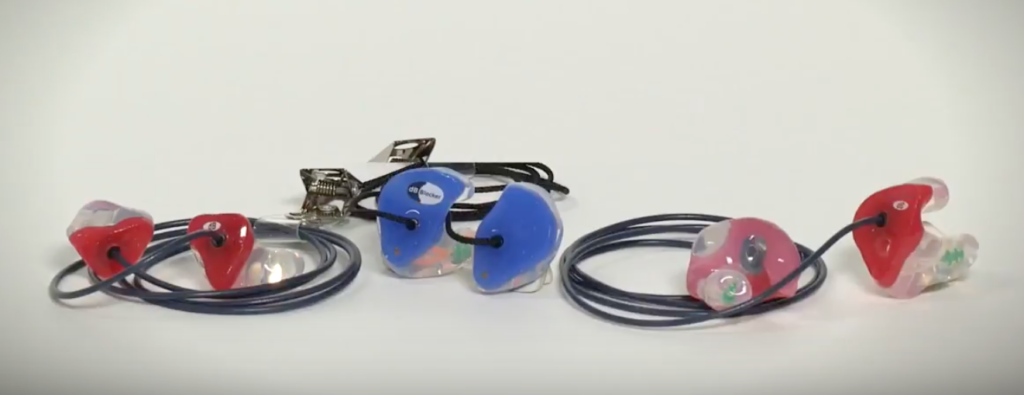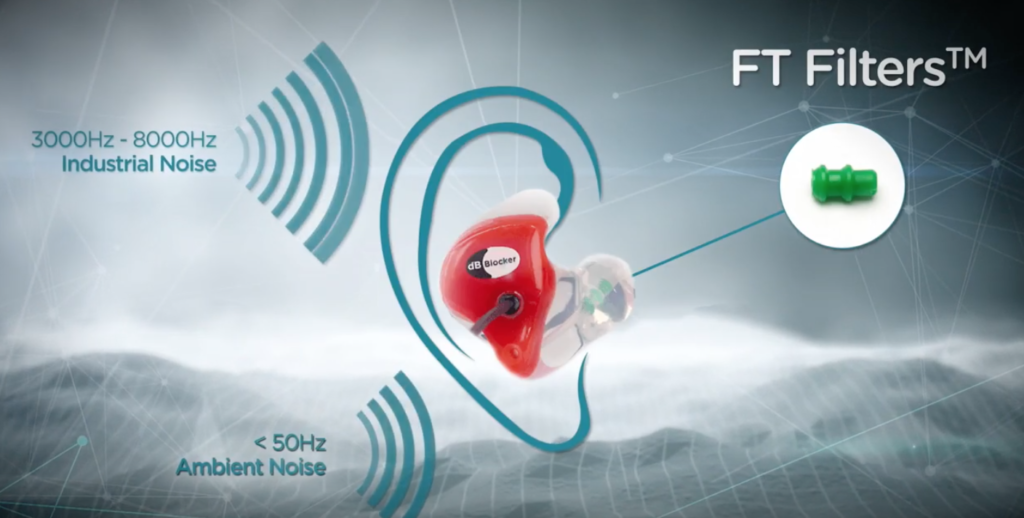Hearing Protection In The Workplace
When does hearing loss, or hearing impairment, become the result of a work-related exposure? After all, we live in a world where loud noises are common, like from heavy city traffic, or even the music so kindly being shared through the open windows of the car stopped next to you. And there’s often that person who thinks headphones are speakers and has the music playing loud enough that it can be heard by everyone in the room. So yes, loud noise is common. And yes, loud noise can lead to hearing loss.
There is no denying that the tools that we use in our lines of work create loud noise, too, but that doesn’t necessarily mean that employees will lose their hearing. With the proper workplace hearing protection controls in place to eliminate, reduce, and protect against potentially damaging noise exposures, we reduce the chances that our employees will experience occupational hearing loss.

Understanding Hearing Damage
How loud does the noise need to be to damage a person’s hearing? Hearing loss can occur when exposed to 85 decibels of noise averaged over 8 hours. Let’s put this in perspective. Normal conversations typically occur at 60 decibels, well below the hearing loss threshold. Remember those headphones used as speakers? That music was probably playing at full volume, which can often register as 105 decibels. Here’s the thing, though. For every 3 decibel increase past 85 decibels, hearing loss can occur in half the amount of time. So it only takes 4 hours of exposure to 88 decibels for hearing loss to occur, and 2 hours of exposure to 91 decibels. Once noise levels exceed 100 decibels, a person can suffer hearing damage in as little as 15 minutes. The louder the noise, the faster hearing loss occurs.

Noise Levels In The Workplace
Where do the tools and environments where we work fit into this picture?
-
Air compressors from 3 feet away register 92 decibels, which would take less than 2 hours to cause hearing loss
-
Powered drills register 98 decibels, which would cause damage after 30 minutes
-
Typical factories often register at 100 decibels – that’s 15 minutes of exposure
-
Powered saws can reach 110 decibels from 3 feet away, which could cause permanent hearing loss in under 2 minutes

In short, if workers are exposed to these noise levels without protection, then hearing loss is very likely. The only way to know the exact noise levels that workers are exposed to is to conduct noise monitoring using specialized equipment, though this is only required when exposures are at or above 85 decibels. Some indications that noise levels may be this high are if employees complain about the loudness of the noise, if there are signs suggesting that employees are losing their hearing, or if the noise levels make normal conversation difficult. Also consider that these conditions may not occur across the entire work site, but may be limited to a specific task or piece of machinery.
How then, do we protect our employees and their hearing?
The Importance Of Hearing Protection In The Workplace
The best protection we can provide is to eliminate the hazard, by eliminating the need to work with the tools or in the environments that create these noise exposures. Realistically, though, this isn’t always possible. We can also work to reduce the noise levels that employees are exposed to. Some tools and machines are available that are designed to operate at lower decibels, therefore reducing the risk of hearing loss.
We can also implement administrative controls, such as placing a cap on the number of hours that an employee can work in a high decibel environment, or limit the hours working with specific tools and equipment.
Our final line of protection is our PPE that meets OSHA hearing protection requirements. Ear plugs, Custom Hearing Protection and ear muffs can reduce the decibel exposures, providing protection against hearing loss. Ear plugs provide the greatest amount of protection as long as they are inserted correctly. Therefore, employees need to be trained to wear them correctly when they are used. Ear muffs can also reduce the decibel exposures, though not to the extent that ear plugs can. They are easier to wear correctly, though, which is why some workers prefer them.
Some high decibel exposures may be unavoidable to perform the tasks necessary for our operations, but that doesn’t mean that we can’t take steps to protect employees and their hearing while at work. What they do in their free time, like attending a rock concert (which can peak at 130 decibels), becomes their choice.
Creating & Implementing A Plan For Workplace Hearing Protection
If you need to create or update your safety management plan to include OSHA hearing protection.
SOURCE
https://www.optimumsafetymanagement.com/blog/noise-importance-hearing-protection-workplace/

























 To the right is a sample of non scientific measurements made at a major fireworks show, with 9 measurements made during this large audience display. The range of measurement duration was between 52 seconds and 19 minutes, with some measurements of an entire display (#5) and some much shorter with just a single rocket (#9). Distance from the sound source was not specified. A summary of the overall data follows{{1}}[[1]]Tingay, J. Noise levels from fireworks – a very unscientific measurement, Noise News, November 2011[[1]]:
To the right is a sample of non scientific measurements made at a major fireworks show, with 9 measurements made during this large audience display. The range of measurement duration was between 52 seconds and 19 minutes, with some measurements of an entire display (#5) and some much shorter with just a single rocket (#9). Distance from the sound source was not specified. A summary of the overall data follows{{1}}[[1]]Tingay, J. Noise levels from fireworks – a very unscientific measurement, Noise News, November 2011[[1]]:
 Wear earplugs or headphones/earmuffs to protect hearing, especially that of children. For children, ear protection can have an additional advantage – the child will be less frightened by the loud sounds. Multiple styles of hearing protection are readily available at any sport shop or from a hearing professional, but for children, headphones may be the best choice because they are more likely to remain in place.
Wear earplugs or headphones/earmuffs to protect hearing, especially that of children. For children, ear protection can have an additional advantage – the child will be less frightened by the loud sounds. Multiple styles of hearing protection are readily available at any sport shop or from a hearing professional, but for children, headphones may be the best choice because they are more likely to remain in place.

 In addition to monitoring and training, employers must also provide workers with suitable equipment to protect hearing while at work. In fact, this is an OSHA requirement for workplaces where the noise levels meet or exceed 85 dB.
In addition to monitoring and training, employers must also provide workers with suitable equipment to protect hearing while at work. In fact, this is an OSHA requirement for workplaces where the noise levels meet or exceed 85 dB.